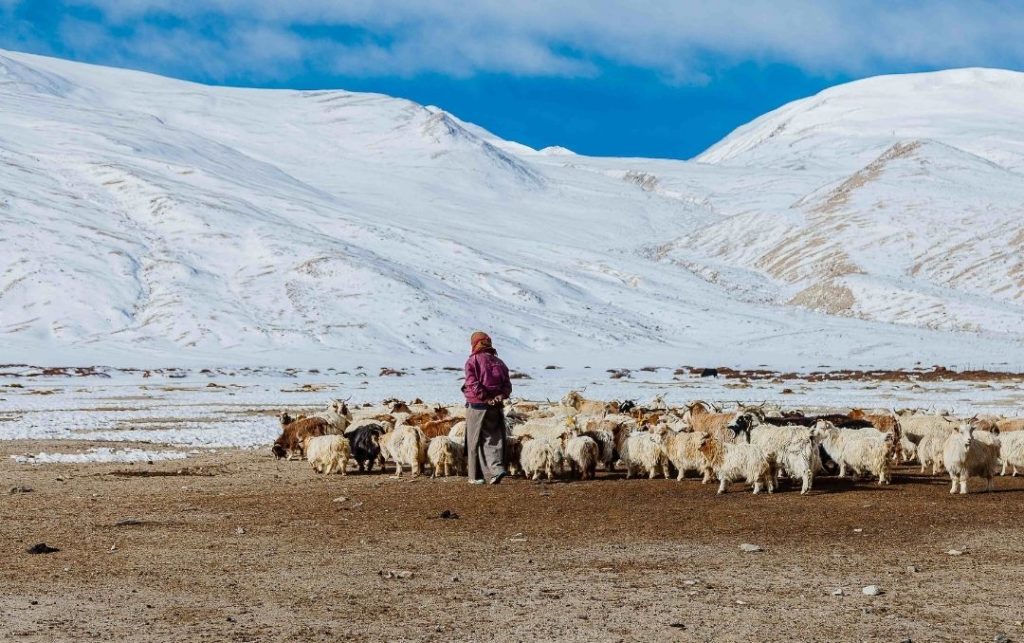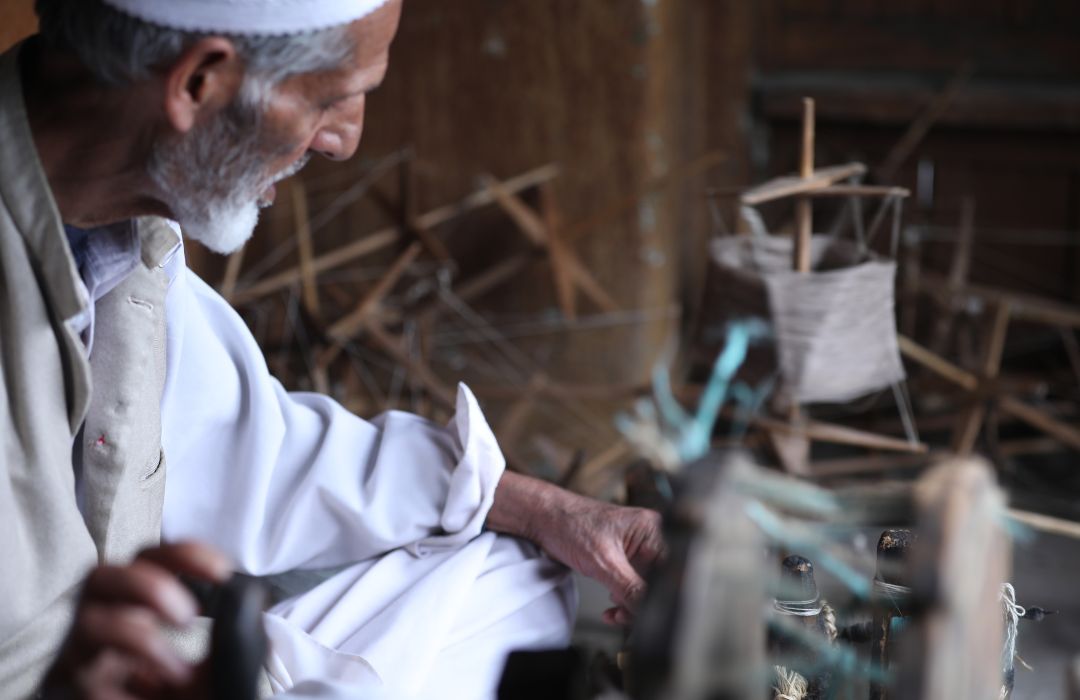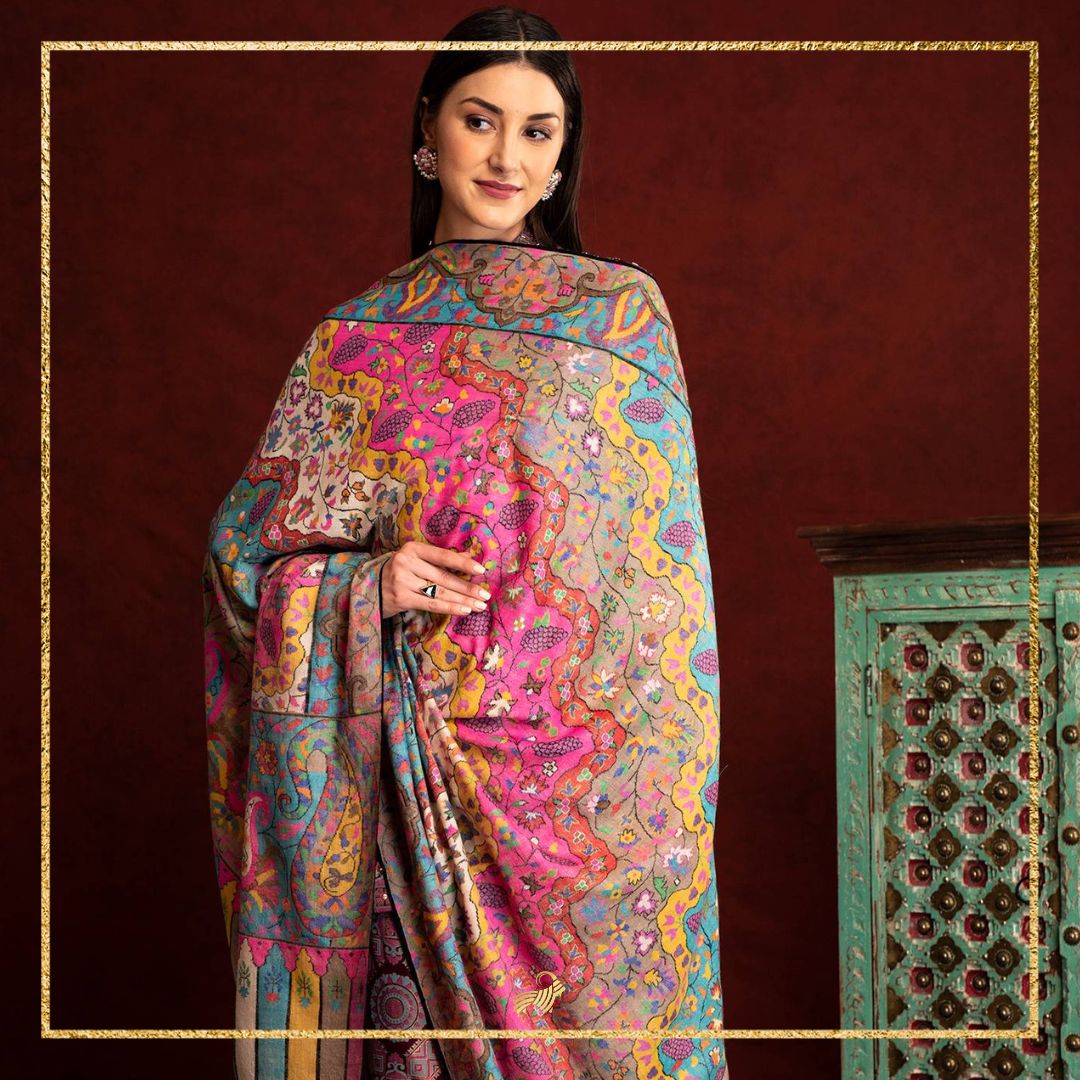Cashmere, a delicate fabric crafted in Kashmir Valley is the finest. The fineness of Cashmere makes the softest and most luxurious accessories. These demand care due to high quality and natural crafting. The durability of the Pashmina accessory also depends on the way people wear it. It also depends on the way people have taken care of it. If these accessories have to be kept alive for generations, then there are specific ways of securing its luxury presence for decades. Exploring the definition of luxury involves properly taking care of Pashmina.
Pashmina is a luxurious craft that makes Cashmere accessories one-of-a-kind. The crafting begins in Ladakh and takes its shape in the Valley of Kashmir. Crafting in Kashmir is an extremely supreme and manual process that beautifully captures every essence of the journey. Further, there are definite ways of taking care of Cashmere at home. Before moving to Pashmina care, a journey awaits. The journey will help to know one's accessory better
The Procuring the fine Cashmere

A rare species of Goats known as Changhthanghi Goats have an undercoat of Pashmina wool around their bodies to prevent the harsh winters from entering their bodies. They are medium-size goats with two twisted horns. They develop the wool on their bodies while the winter is at its peak and the temperature goes to a minimum of minus 40 degrees Celsius. Eventually, when the season of winter changes to summer, the goats shed this wool off by rubbing it with rocks and barks. The herders also comb the excess wool off to sell in the market. Due to the rare species of Goats, the portion of Ladakhi Cashmere herders acquire is 80 to 160 gms a year. The wool is fine Cashmere wool.
There are diverse breeds of cashmere-producing goats. Each breed has a specific percentage of production in the total production. The several breeds viz; Australian Cashmere Goat, Liaoning, Inner Mongolia, Xinjiang, Hexi, Zhonghwei, Tibetan Plateau, Luliang breeds, Changthanghi, etc. Therefore, all the breeds produce Cashmere wool that produces warmth. The exclusive breed of goats called Changra Goats is a rare species of goats that produce the finest Cashmere.
In addition, the Goats produce fine Cashmere wool once every year. Therefore, goats produce only around 80 to 170 gms of Ladakhi Cashmere a year. Therefore, considered the rarest. Also, other breeds of it produce several times more as there are almost 400 million Cashmere eliciting Goats all over the world. Consequently, the production caters to the manufacture of different styles like Pashmina Shawls, Cashmere Scarves, and Cashmere Wraps.
Pashmina Crafting in Kashmir

After the arrival of Cashmere in Kashmir, the first and foremost step in Pashmina Craft is the cleaning of the Cashmere wool. Artisans do it after thoroughly cleaning the Cashmere wool. Later artisans carry the wool to the homes of Kashmir where women work on a spinning wheel (called Yinder in the local language). They spun the Cashmere to make fine yarns. The fine and soft yarns are softer than anything.
After the process of Spinning, artisans weave the yarn to craft a Shawl, Cashmere Wrap or Cashmere Scarf. This is the process of hand Weaving. Enforced by the men's artisans who weave the Cashmere yarns on a handloom made of wood. Artisans work in the workshops where they set these handlooms up. The aura of Kashmir is adjoined in every interweave. Afterwards, workers dye the Pashmina accessory as per requirement. Eventually, given to the artisans who work on each cashmere accessory with the designs required including patterns, prints, hand embroidery, Embellishments, etc.
Mir Syed Ali Shah Hamdani came with an elixir of Pashmina
Pashmina handicraft was given as a skill to the people of Kashmir by the craftsmen of Persia accompanying the saint called Mir Syed Ali Hamdani. He was a mystic who traveled to the world to preach Islam. While traveling to Kashmir, the saint landed in Ladakh. He was astonished to see the species of Goats at the feet of Changhthanghi mountain. The wool they owned was softest and finest. That is why the goats are called Changhthanghi Goats. He combed out the wool from the goat and crafted a pair of socks from it. He also named the wool Pashmina. Derived from a word called pashm which means "king of fibres" or "gold fibre" in Persian.
The saint visited Kashmir with his scholars and 700 Craftsmen. His craftsmen taught the crafting of Cashmere to the local people of Kashmir. From then till now, Pashmina enlivens the hearts of the Artisans of Kashmir through generations.
Also read: HOW MANY HOURS ARE REQUIRED FOR WEAVING A PASHMINA SHAWL?
Handcrafted Pashmina accessories

The heritage of Kashmir has handicrafts that are highly luxurious. Pashmina Craft is a handicraft among the other premium handicrafts. The finest wool procured from a rare species of Goats called Changra Goats is Cashmere. To craft the luxury of Cashmere, Pashmina Art of Kashmir reflects the grace of hand skill of artisans on it. Therefore, it is the crafting of the finest Cashmere procured from Changra Goats who dwell at the feet of Changhthanghi, Ladakh. This craft is an indigenous craft belonging to the luxury of fashion.
There are mainly three types of Pashmina Craft styles; Cashmere Wraps, Cashmere Scarves, and Shawls. Cashmere Wraps are versatile accessories that travel towards the contemporary era of defined fashion. There are several designs in Cashmere Wraps including the rich Kani Cashmere Wraps, Hand-embroidered Cashmere Wraps, Patterned, Printed, Swarovski crystals, Laced, Solid, and Reversible Cashmere Wraps. Also, cashmere Scarves enforce versatile designs to reveal the beauty of Pashmina with such elegant accessories. Furthermore, Pashmina Shawls are the traditional accessories that define the fashion of royal courts as well as profuse to showcase modern fashion. Endless designs created on the Pashmina Shawls to define luxury are there.
Do's while caring for Pashmina wrap
- Firstly, keep your wrap in a dry place away from sunlight. It will precisely help in caring for Pashmina. In case of contact with moisture, clean it and dry it out to get it moisture free as soon as possible.
- While washing the wrap, make sure to use the light hand and hold it gently.
- Wash the wrap with a gentle Cashmere soap or any other mild cleansing soap.
- Always wash Pashmina in lukewarm water to ensure the softness of the accessory.
- Gently brush the Pashmina accessory after every wear to clean it as they hoard dust easily.
- Store the Pashmina in a muslin cloth to avoid the development of lint. You can also store Pashmina wrapped in chemical-free tissue paper to avoid the attack of moths.
- In addition, use a clean outer box or storage drawer where you can keep the wrap separately away from all other clothes. Remember to put some Azadirachta indica or Indian Lilac sachets or lavender sachets to repel moths.
- If you want to secure your Pashmina for a longer period as you wear it occasionally, add a layer of zip-lock plastic bag after the tissue layer to avoid any wear and tear in the closet.
- Consider a professional restoration after each decade of using Pashmina accessories to cherish it for another decade.
- Make sure you aerate the wrap periodically like once a month or once two months to ensure the freshness of the Pashmina.
Don'ts while caring for Pashmina wrap
- Do not dry the Pashmina in direct sunlight after washing. In addition, spread it on a towel and put it in the air to let it dry naturally.
- Do not wring the wrap while washing.
- Make sure to never expose your wrap to direct sunlight for a longer period to avoid the degradation of the fine fabric.
- Make sure you never hang a Pashmina in the closet as it can cause the fabric to stretch and lose its shape. Instead, always fold and stack it neatly to keep the material intact and fresh.
- Never use Naphthalene balls around the Pashmina accessory. It can cast a smell on it and will leave the fabric not at all fresh.
- Also, never use newspaper to wrap the Pashmina product. The ink absorbs into the fabric. Thus, making it more prone to moths and dirt.
- Never use green chillies or any other herbs to preserve the Pashmina. These can create more ravage to the product than any benefit.
Also read: HOW TO CLEAN PASHMINA AND SILK SCARF?
A rich Collection
We, at pashmina.com, craft the luxury of Pashmina with high supremacy. The concept of sustainable fashion brought forward with zeal and grace is the charm of Pashmina. The endless accessories crafted in Kashmir cater to all the people of the world. We define the legacy of Pashmina in numerous styles and designs imbibing versatile elegance in all intricacies. To preserve the luxury of your Pashmina, follow the steps of caring for the Pashmina mentioned above.
Also read: HOW OFTEN DO YOU NEED TO WASH CASHMERE?